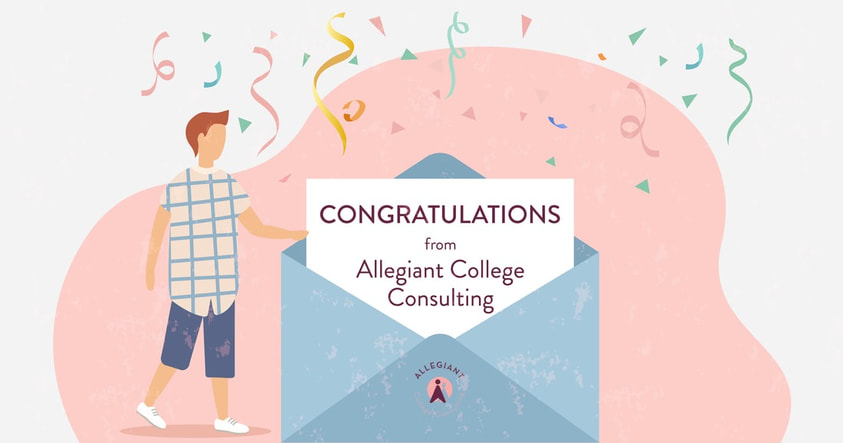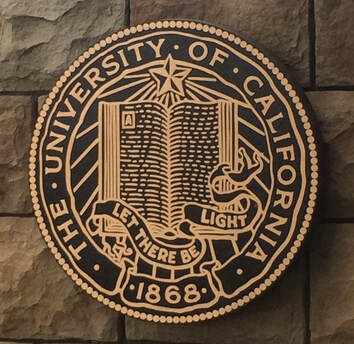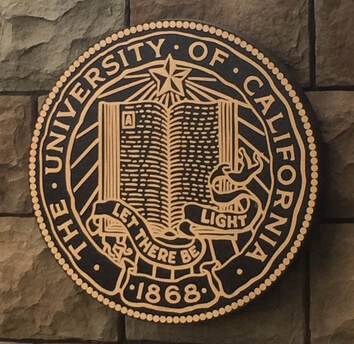|
I'm proud of the hard work and commitment my seniors put into their applications this year and am thrilled to share that my Class of 2024 was admitted to the following schools:
American University Arizona State University Boston University Cal Poly Humboldt Cal Ply SLO Cal State East Bay Carnegie Mellon University Case Western Reserve University Colorado State University Elon University Franklin University Switzerland Gonzaga University Harvard University Indiana University, Bloomington Iowa State University Marist College Michigan State University Muhlenberg College NYU Ohio State University Oregon State University (Honors College) Penn State University (University Park) Pepperdine University Purdue University (Honors College) San Diego State University Southern Methodist University (SMU) Syracuse University Texas Christian University (TCU) Texas Tech University Tulane University University of Alabama University College London (UK) UC Berkeley (Regent Scholar Engineering) UC Davis UCLA UC Irvine UC Riverside UC San Diego UC Santa Barbara UC Santa Cruz University of Arizona University of Bristol (UK) University of British Columbia University of Chicago University of Colorado, Boulder University of Connecticut University of Denver University of Edinburgh University of Hawaii University of Illinois Urbana Champaign University of Iowa University of Kansas University of Kentucky University of Manchester (UK) University of Maryland University of Miami University of Michigan University of Mississippi University of Oregon (Honors College) University of Puget Sound University of Reno Nevada (Honors College) University of South Carolina USC University of Toronto University of Utah University of Washington University of Wisconsin, Madison Washington State University Western Washington University (Honors College) This year's results yielded similar patterns to last year's. Students with notable talents, whether they were recruited athletes or showcased their artistic abilities through optional arts supplements in music, dance, or visual arts, tended to fare better with the more selective colleges. And students whose application stories shone through, where their academic rigor, summer activities, research experiences, community service, and leadership roles all followed a coherent and compelling narrative, had better results compared to those with disjointed extracurricular profiles. This emphasizes how important it is for the application to reflect the student’s genuine passions. One notable trend this year was the continued reliance on waitlists by the UCs and selective Cal State campuses. Many of my students are waitlisted at numerous UC campuses. Last year many students came off those waitlists, so I am hopeful we will see the same results in the coming weeks and months. I also saw some perplexing results. Most notable is a highly accomplished student who was accepted to Harvard, Berkeley, UCLA and others, yet DENIED at Cal Poly Slo. It’s important for CA students and families to remember that all UC campuses except Merced are selective, and they are considered the most selective for students that come from high achieving high schools. For example, University High School in Irvine is filled with high achieving students who max out AP courses, score 5s on all AP exams, are national merit finalists, and more. In Uni's class of 2023, 249 students applied to UC Berkeley with an average GPA of 4.01, and just 29 were admitted. 289 applied to UCLA with an average GPA of 3.97, and just 26 were admitted. 291 applied to UCSD with an average GPA of 3.94, and 53 were admitted. While students can do things like take dual enrollment courses, earn 5s on AP exams, and max out AP and honors classes to make themselves more competitive, there are no guarantees, no matter how accomplished a student is. So my message remains the same. Apply to a balanced list of colleges. In fact, I require my students to apply to at least two favorable schools and two target schools. When assessing admission chances, it's helpful to consider the admit rate in a variety of contexts. For private colleges, look at the overall admit rate. For public out-of-state colleges, focus on their out-of-state admit rate. Public universities typically have different admission standards and admit rates for in-state and out-of-state applicants. The out-of-state admit rate can give you a better idea of your chances as a non-resident applicant. Try to research the program or major specific admit rates. You can often find this information on the college's website or by contacting the admissions office. Also, pay attention to each university’s standardized test policy. If the college is test optional, look at the percentage of students admitted with test scores. If more than 50% of accepted students submitted test scores, not having one lowers your chances. Also, if the school requires tests, or you plan to submit a score to a test-optional college, having a score in the 75 percentile or above will increase your chance and vice-versa. While this is not an exhaustive list by any means, by considering these and similar factors, you can gain insights into the level of competition and the likelihood of admission at different colleges. 
Congrats to high school seniors and their parents on making it past the November 1 early college application deadlines. YAY! Rick Clark, Director of Admissions at Georgia Tech, recently published this insightful and timely blog reminding seniors and their families celebrate every acceptance as a victory.
https://sites.gatech.edu/admission-blog/ Some of my favorite lines include: "I hear too many students get into a college and say, “Yea. But it is just the University of X.” C’mon, man. You applied there. You worked hard to assemble an application– and you paid to send it in. Now you’ve been offered a spot. AMAZING!" "And look- the entire goal here is to have choices and options. YOU just got another one. That is awesome. I’m proud of you and you should be proud of yourself too. Don’t let a school’s ranking or admit rate diminish your excitement." 
So much of my job has become managing the expectations of parents and students, trying to get parents to see that the college rankings have little value (they are based on a flawed methodology), helping students find colleges that go beyond those 50 most well-known and difficult to get into, and making sure my students put a few favorable and target schools on their lists so that they have great options! This season I had the pleasure of working with many thoughtful, smart, and dedicated seniors who received acceptances to the following schools: American University Arizona State University Ball State University Baylor University Belmont University Boston College Boston University Cal Poly San Luis Obispo Cal State Long Beach Chapman University Chico State University Colorado State University Emerson College Fordham University Indiana University James Madison University Loyola Marymount University Michigan State University Molloy University Muhlenberg College Northeastern University NYU Oakland University Ohio State University Oregon State University Pace University Penn State University (Main Campus) Purdue University Rider University Rutgers University San Diego State University Syracuse University TCU Tufts University UCLA UC Davis UC Irvine UC San Diego UC Santa Barbara UC Santa Cruz University of Arizona University of Colorado Boulder University of Iowa University of Michigan University of Nevada Reno University of Oregon University of the Arts University of Utah University of Wisconsin Madison Washington State University Several people have reached out to me in the last week asking if this year was more brutal for my students and, honestly, I don't think this year was any different than the past couple of brutal years. In CA, the UCs and more competitive Cal States continue to have WAY more qualified CA applicants than there are spots, and students are being compared to their classmates within their own high school in terms of rigor (# of AP and IB and college courses), GPA, activities, etc. Students in competitive public high schools, like here in Irvine and Tustin, are at a disadvantage because there are so many accomplished students taking those same classes and earning stellar grades. And since test scores can no longer be used, more students apply, and the admit rate remains low. For these reasons, the most desirable UC campuses: UCLA, UCSB, UCI, Cal, UCSC, UCD will continue to be selective schools for ALL students. Ivies and other highly rejective schools that boast single digit admit rates are ALWAYS huge reach schools unless the student has an extraordinary accomplishment (nationally or internationally recognized talent, recruited athlete, published research, designed or created something and got a patent approved, etc.). Then it becomes a reach instead of a huge reach. Rather than focusing on what they can do to have a chance at these schools, I try to get my students to focus on what they like to do, the classes they are interested in, the activities that appeal to them. If they follow their passions, they will have an authentic story to tell, and if they go into the admissions process with an open mind and heart, they will find a college where they will be happy and flourish. 
Most UC campuses saw a record number of first-year applications in last year's admissions cycle, fueled most likely by UC's test blind admission policy.
The campuses continue to prioritize the following: --Admitting more CA residents to meet the states mandate that no more that 18% of students are non residents --Admitting high percentages of first generation and Low Income students Here are the Application Numbers and Admit Rates by campus (in order of most selective to least selective): UCLA 149,815 applications 9% admit rate (first time in single digits) UC Berkeley 128,100 applications 11% admit rate UC Irvine 119,210 applications 21% Admit Rate UC San Diego 131,225 applications Admit rate 23.7% UC Santa Barbara 111,006 applications 26% admit rate UC Davis 110,189 37.5% admit rate UC Santa Cruz 66,033 applications 47.1% admit rate UC Riverside 54,685 applications 69.35% admit rate UC Merced 29,921 Applications 90% Admit rate UC campuses can see the following GPAS when reviewing applications: Weighted, Unweighted, and UC Weighted Capped. Below are the Median 50% GPAs shared this morning by each Campus (in alphabetical order). UC Berkeley Weighted GPA: 4.31-4.66 UC Davis Unweighted GPA: 3.83-4.0 UC Weighted Capped GPA: 4.05-4.29 UC Irvine Weighted GPA: 4.22 Unweighted GPA 3.95 UCLA Weighted GPA: 4.53 Capped GPA: 4.26 UC Merced Weighted GPA 3.78 UC Riverside Weighted GPA (range): 3.8 - 4.19 UC San Diego Weighted GPA (range): 4.12 - 4.3 UC Santa Barbara Weighted GPA: 4.52 Key Takeaways: MAJOR SELECTION: All campuses allow students to choose an alternate major, but for many campuses (i.e. Berkeley and UC Irvine), the student will only be considered for the alternate major if space remains in the alternate major or for the waitlist. Students must be directly admitted to engineering and other highly selective programs/colleges (i.e. UCSB's College of Creative students and most computer science and biology degrees at all campuses). I do not recommend students try to game the system by choosing a major they are not truly interested in. RIGOR OF SCHEDULE/SELECTIVITY: Campuses look at the number of Honors, AP, and IB courses taken. They will only review students in the context of their own high school. Keep in mind that the University of CA serves students across the entire state, and its goal is to provide opportunities for students at every school. That means that students are, in essence, being compared to their classmates. The more competitive the public high school (high schools with large numbers of high achieving students) the more difficult it is for the UC to offer spots to all qualified students at that high school. 
It looks to be the most competitive year for UC campuses.
Last month, the UCs released detailed enrollment data for last year's high school seniors, the class of 2021. Many high schools saw significant jumps in average admitted GPA to UC campuses that were typically more attainable. Take University High School in Irvine for example: Average Admitted GPAs: UC Santa Cruz: 4.09 (2021) vs. 3.91 (2020) UC Riverside: 4.03 (2021) vs. 3.9 (2020) From what I have seen so far with UC decisions, I suspect the average admitted GPA to be even higher for this year's seniors across all campuses, but unfortunately, we most likely won't have that data until early 2023 after next years seniors apply. I just had a IB diploma student with a 4.7 GPA get waitlisted at UC Santa Cruz. I was shocked. Granted, they probably thought she wouldn't go, waitlisting her only to see if she would opt in. Since she already has great options with strong merit scholarships, she probably won't choose UC Santa Cruz. But I don't recall UC campuses playing these enrollment games in the past. My Advice: 1. If you have a kid applying to the UCs next fall, make sure they apply broadly, meaning they should apply to as many campuses as they will realistically consider. The UCs do not talk to one another, so applying to one campus does not affect your kid's chances at another campus. 2. Make sure they apply to several favorable schools outside of the UC system. 3. If your kid really has their heart set on a UC campus and doesn't get in, think about doing the TAG (Transfer Admissions Guarantee) at your local CA community campus. MARCH 2022 University of CA Counselor Bulletin "Systemwide applications climb to highest number ever in UC's 154-year history The University of California recently announced that its campuses received a record-breaking number of applications for fall 2022, underscoring UC’s position as one of the most sought-after higher education systems in the world. “The University of California remains an institution of choice for so many hardworking prospective undergraduates,” said President Michael V. Drake, M.D. “This diverse group of students has shown their commitment to pursuing higher education and we are thrilled they want to join us at UC.” Systemwide freshman applications rose 3.5 percent, including a 3.3 percent growth for California freshman applicants. The university also saw an increase in the socioeconomic diversity of its California applicant pool for fall 2022. Systemwide, the proportion of California freshman applicants and California Community College (CCC) transfer applicants from low-income families grew to 46 percent and 56 percent respectively for the 2022 application period. Community college enrollment declined nationally for fall 2021 due to the impacts of the global COVID-19 pandemic. This trend was especially true for CCCs, where enrollment declined by roughly 15 percent for fall 2020. That dramatic drop decreased the available pipeline of students applying to transfer to UC from CCCs for fall 2022. Systemwide, transfer applications decreased 12.6 percent. “UC is aware of the decrease in transfer applications and California Community College students across the system and is working to ensure that this critical group is supported in their efforts to apply at our campuses,” said Han Mi Yoon-Wu, executive director of Undergraduate Admissions at UC. “We are committed to having a strong and diverse pipeline of students.” Chicano/Latino students comprised the largest ethnic group of the pool of California freshman applicants (38.1 percent) for the third year in a row, a 4.1 percent increase over the past year. Similarly, Chicano/Latino students comprised the largest ethnic group of the pool of CCC applicants (31.8 percent) for the fifth year in a row. In addition, important gains were made in systemwide freshman applications for fall 2022 from American Indian students (32.8 percent increase over the past year), African American students (2.8 percent increase over the past year) and Asian American students (5.8 percent increase over the past year). Additional details about the fall 2022 applicants to the university can be found here, along with preliminary campus-by-campus breakdowns." |
